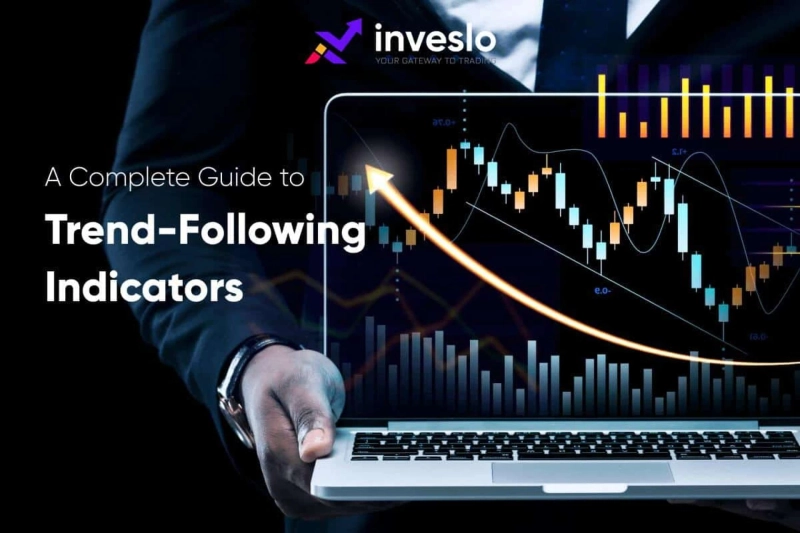There are many distinct trading indicators available on the financial markets, each with a specific function. These indicators are useful for assessing, trading, and making money from the constantly shifting state of price movement.
It is crucial to group these indicators according to their application and the market conditions in which they are most effective for analyzing price movement and providing trading tips.
But before proceeding further, let’s proceed to know what is a trend following a trading strategy.
What Is a Trend Following Indicators?
Technical tools called trend-following indicators assess the strength and direction of trends throughout the selected time frame. Some trend-following indicators are plotted right on the price panel, sending out negative signals when they are above the price and bullish signals when they are below the price. Others are drawn below the panel, producing up- and down-ticks from 0 to 100 or over a central \'zero\' line, producing bullish or bearish divergences when opposing prices.
The majority of trend-following indicators are \'lagging\', which means that they produce a buy or sell signal after a trend or reversal has already begun. The most common trailing trend-following indicator is the moving average. These indicators can also be \'leading\', which means they anticipate price action before it occurs by comparing momentum across many time frames and doing multiple calculations. A well-liked leading trend-following indicator is the parabolic stop and reverse (Parabolic SAR).
There are three main purposes for these indicators. They first make an effort to inform the technician of a changing trend or impending reversal. Second, they make an effort to forecast both short- and long-term price movements. Thirdly, they validate findings and indications in the price pattern and other technical indicators. The parameters used to create the trend-following indication have the most influence on signal dependability. Examples include the generation of distinct buy and sell signals by a 50-day moving average and a 200-day moving average, which may be effective in one-time frame but not the other.
Top Trend-following Indicators
Here, in this section, we will explain the best trend following indicators. Let’s take a quick look:
- Moving Averages
One of the most often used trend-following indicators is the moving average. The average price of an asset over a given period of time is shown by a moving average, which is a line. Before making a transaction while you trade forex online, you should frequently use moving averages to confirm the direction and intensity of a trend.
- Moving Average Convergence Divergence (MACD)
The difference between two moving averages is measured by the trend-following indicator known as the Moving Average Convergence Divergence (MACD). In order to enter or exit transactions at the ideal time traders frequently use the MACD to spot changes in momentum or trend direction.
- Bollinger Bands
A common trend-following indicator called Bollinger Bands uses a series of lines to depict the top and bottom of a trading range. Bollinger Bands are frequently used by traders to assist spot overbought and oversold market circumstances as well as probable trend reversals.
- Relative Strength Index (RSI)
The Relative Strength Index (RSI) is another popular trend-following indicator. By contrasting the average gains and losses over a given time period, the RSI gauges the force of a trend.
The RSI is often used by traders to spot overbought and oversold market conditions, which can aid them in making better trading decisions.
Trend Following advantages
Numerous benefits of trend following method include:
- Big victories are possible, unlike with previous strategies.
- Minimal transaction costs.
- Your entrances and exits don\'t have to be timed perfectly.
- As the trend gets stronger, you could increase your position to increase your chances of making money.
Trend Following Disadvantages
Additionally, there are several drawbacks to trend following, the most prevalent of which are as follows:
- It can be difficult mentally to ride the trend.
- The win rate (number of winning trades divided by the number of lost trades) is lower.
- Because trend following demands that the trend be already in motion, you\'ll miss the trend\'s beginning.
Final Thoughts
On a leading Forex trading platform, the trader can predict the stock price and choose the optimum time to purchase or sell the stock by using a trend-following technique, which is straightforward. To develop the technique, one needs just employ one trading indicator or one or more indicators in combination.
You can use the different methods for your trades now that you are aware of what trend trading is and what it entails. Before using your strategies, you must, however, perfect them. Use all the tools you have at your disposal, including charts, candlestick patterns, research data, and other tools, to examine the trends.



